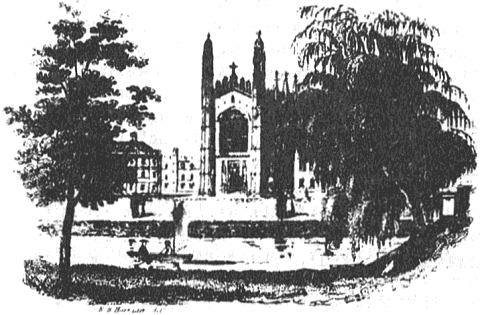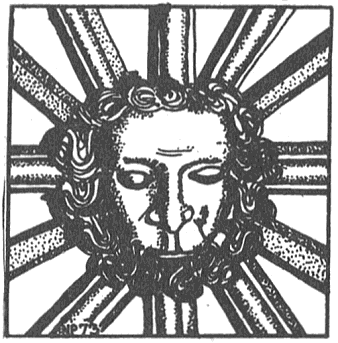
Journal of Geomancy vol. 3 no. 2, January 1979
{48}
A large-format, glossily-presented book, covered by a full-colour M.C. Escher engraving of chameleons crawling through a skeletal polyhedron, at the price of £6·50 has a lot to live up to. What cosmic truths are ensconced within this tome? What revelations are in store? After an introduction in which the author states “the aim of this atlas is to redress the balance somewhat by demonstrating the impermanence of scientific theory”, we find the acknowledgements … and we see the sources (some of them) mentioned. Now it becomes clear what is going on. In the wake of Michell and Rickard’s excellent Phenomena (Thames & Hudson), this sort of thing was only to be expected. And Rickard’s files from the celebrated and legendary Fortean Times were generously opened for Hitching’s perusal. Of course, we get Spontaneous Human Combustion (with a nice photograph), dowsing, balls of fire, evolution, dinosaurs, races of mankind, early navigators, remote viewing, the Deluge, Atlantis, Noah’s Ark, Creature Storms, wild children etc. etc. Von Däniken-bashing begins anew, as the author now seems to enjoy attacking others’ theories, such as ideas on the Mary Celeste, Colonel Fawcett and Bigfoot. On geomancy, his footings are shaky. He takes John Michell’s works as a primary source in most instances. For Feng-Shui, he uses Michell and Eitel when Feuchtwang’s scholarly study is available. In earth patterns, he drags out the St. Michael’s Mount – Bury St. Edmund’s alignment {49} which Michael Behrend disproved in the first IGR Occasional paper in 1975. Again, Michell is a primary source, this time Astro-Archaeology. Hitching states (of Teudt) “although the racialist content of his writings make his work unprintable today, his astroarchaeological findings may yet prove valid”. This is Hitching’s interpretation of Michell’s words “bombastic prose”. Teudt, whilst chauvinist about his heroic Germanic forefathers, is not unprintable, as future issues of JOG will show.
As entertainment, the book is a well-produced coffee-table product. Its lamentable errors in various parts (two conflicting dates on p. 125, where the Antikythera calculating-machine is dated 65 BC and c. 880 BC, for instance), reduce its usefulness from redressing the balance of scientific theory to mere entertainment, and, for such potential, that is a great shame.
Originally published as a hardback in 1974, the intention of Sladek’s book was to debunk what such people call
‘pseudo-science’. On a par with Evans’s Cults of Unreason, the author attacks UFOs
and their devotees, astrology, Atlantis, perpetual motion, ESP, ectoplasmic frauds, cycles of events, and “secrets
of the ancients”. This latter category includes our subject, which knocks Hawkins’s Stonehenge
Decoded, whilst leaving Thom and the Mexican astro-archaeologists unmentioned. Michell is demolished (unfairly)
with a scant ½-page about Glastonbury Abbey, taken from RILKO’s
Glastonbury: A Study in Patterns. “When taken down to the Michell level, ruins cease to amaze, and
begin to disappoint.” writes Sladek. His demolition of many famous cult figures is not new – it surprises me
that he doesn’t mention Alfred Watkins or even Sir Norman Lockyer. If read with a critical eye, the information in
the book is valuable as a document of human credulity, but let us remember that sometimes that which people believe also
happens to be the truth.
N.P.

This book was first published in 1974 by The Land of Cokaygne in a limited edition. It is now back in print with a new cover. This very reasonably priced book which sells at £2·95 in paperback is essential reading for anyone interested in King’s College Chapel. All tourists should read it before seeing the chapel as it is a learned work written for the lay person. It gives a detailed history of the building of the chapel and of the people involved over the many years of its construction. The author gives an interesting account of the events leading up to the building of the ‘new’ chapel which was to replace an earlier one of much smaller size. It was not only an architectural masterpiece but it had mystical significance and this is explained in detail with appendices on the themes which support this.
All the drawings and diagrams except a few were done by the author himself. This book is a sort of independent guide book to the chapel and the author makes it clear that the original purpose of the chapel has been changed over the years. He points out that the alterations to the original structure which have occurred down the ages at the hand of people who did not understand the significance of Henry VI’s great work.

After having read this book the visitor to the chapel can see things that he didn’t notice before. It deserves to
sell well as it is crammed with interesting facts and theories.
Sheila Cann
..................................................
Above: Harraden’s engraving of the chapel.
Right: Pennick’s drawing of a roof clave (pre-1461).